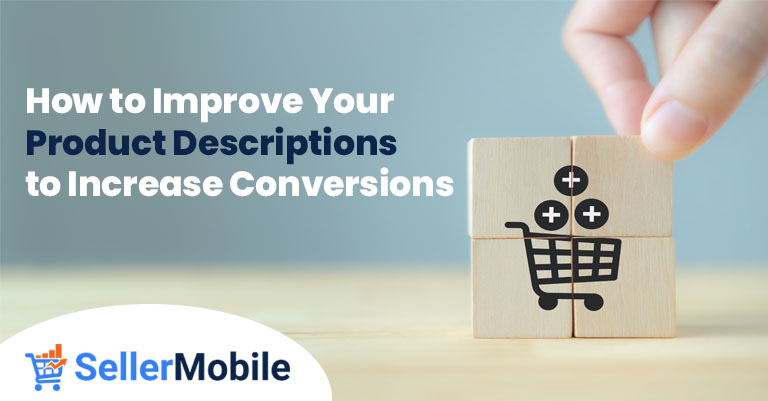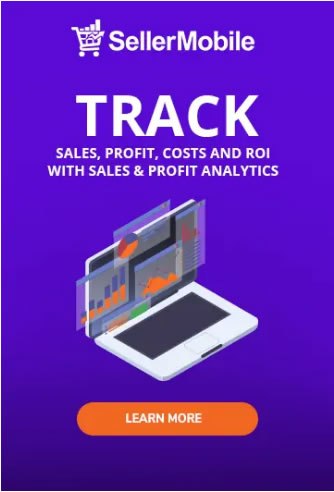Having trouble closing sales, even with carefully selected images, descriptions and prices? Here we’ll show you how to optimize your product descriptions to better lead to conversions.
In the ecommerce space, product descriptions are more than just information. They take the place of in-person connections you would have established at a brick-and-mortar store.
Unfortunately, you don’t have the advantage of winning over customers with your personality and passion. Which means you’ll have to optimize your product descriptions according to specific strategies. Here we discuss best practices for developing product descriptions that lead to conversions.
The Importance of Product Descriptions
Despite the fact you can’t actually talk to your customers, your product descriptions have more power than you might think. Because your product descriptions take the place of in-person conversations, your words have the potential to become your most effective marketing tactic.
Strategically optimized product descriptions can do more than just close a sale: they can lead your customers to explore your other products, visit your brand’s website and even sign up for your email newsletter. Simply put, the right product description intrigues your customers and keeps them interested in your brand beyond a single sale.
Though most shoppers are drawn to high-quality product images, the description underneath it is what keeps them from moving on. Think of your product descriptions like the second half of a first impression: if a stranger has a nice smile but won’t shake your hand, you probably aren’t going to talk to them again.
Product Description Basics
There are a few essential elements of any decent product description that you’ll want to master. Without these, advanced optimization strategies won’t make a difference. Even a customer who matches your buyer persona won’t make a purchase if your description overlooks the basics.
A Heading That Grabs Attention
First things first, make sure your product headings do more than just name your product. Including a few concrete adjectives will help your customer visualize using the product and enjoying it. Avoid abstract sales-y language like “terrific” or “impressive.” Instead, opt for the soft sale. For example, if your product is a t-shirt, you can include words like “soft,” “sporty” or “water-resistant.” Anything that helps your customer imagine enjoying your product.
An Attractive Image
As mentioned above, your product image determines your customer’s first impression of your brand. We won’t go into detail about product images here, but you can check out our blog post on how to create professional-looking product images with your smartphone.
A Thorough List of Features
You’ll want to take care to include every possible attribute you can think of when describing your products. When given a choice between two identical products, customers will always go with the listing that gives more detail.
Carefully outlining every detail of your products helps build trust and make customers feel like they know what they’re paying for. After all, a description with less details could be hiding something. At least, that’s how your customers will feel.
Clear, Readable Formatting
Statistically, ecommerce shoppers spend an average of 7.5 seconds reading a product description. That’s not a lot of time to close a sale!
Studies show that the harder your description is to read, the more likely potential customers will move on. Make sure your description doesn’t turn into a wall of text that’s intimidating to the eye.
Break up your paragraphs into smaller pieces. Have only one or two sentences in each piece. Before your customer begins reading your description, you want them to feel like it will be easy to read your description.
Specific Strategies
Once you’ve gotten the basics down, it’s time to employ specific optimization strategies. Optimization strategies help your listings appeal to the correct buyer persona and fit in with your overall marketing objectives.
Know Your Audience
Beyond simply detailing your product’s features, you’ll also want to choose language that matches the kinds of people likely to buy your product. In other words, you’ll want to consider your customer’s age, gender, interests, lifestyle and pain points. This will help you know which of your product’s features to emphasize.
Let’s use the example of selling a salt lamp. Salts lamps are designed to help people sleep better and breathe easier. Salt lamps are also a natural way of sleeping better and breathing easier–more so than sleeping pills or decongestants.
Right away, we can discern a few things about this product’s target audience. Potential buyers likely believe in holistic medicine and all-natural remedies. They also likely want to reduce their use of electronics. Furthermore, such people suffer from insomnia, fatigue, headaches and the like.
Knowing the audience helps us optimize the product listing. The description could include phrases like “alternative medicine,” “holistic healing,” “all-natural remedies” and “abundance.” The most important features of the product are those which address the buyer’s pain points: the salt lamp cleans the air to allow for easier breathing, so customers won’t have to subject themselves to the long-term side effects of taking decongestants every day. And so on.
Highlight Benefits
On top of describing as many product features as you can think of, you also want your customers to clearly visualize the benefits they’ll enjoy as a result of using the product. In many ways, customers don’t buy the product so much as they buy the benefits. After all, they don’t want the product for its own sake. They want what it does for them.
If you’re selling fruit and vegetable juicers, you might be inclined to draw attention to features like being made from durable materials or having dishwasher-safe parts. However, a more effective strategy is to emphasize why these features matter.
For instance, durable materials mean the customer won’t have to buy replacement parts as often. Their juicer can fall to the floor without taking damage. Dishwasher-safe parts mean that the juicer is easier to clean, and so the customer can save time. Less time cleaning means more time to spend with their family or enjoying their hobbies.
By highlighting the concrete benefits of using your product, you put a clear image in your customer’s mind. And if they can imagine using the product, they can imagine buying it.
Help Them Scan
Last but not least, you want to make your descriptions scannable. As already mentioned, proper formatting plays a key role in this. But there are further efforts you can make so that customers want to read your description.
Use short sentences and straightforward language to describe your product. Each sentence should communicate a single idea, not two or three. If a word with less syllables will do the trick, that’s the word to use. Customers aren’t reading your description to see how large your vocabulary is. They just want information.
Use bullet points to draw attention to the most salient product features. Whenever possible, avoid creating a wall of text. Bullet points help break up your description into easily scannable pieces, and make it quick and easy for customers to get the information they are looking for.
Consider including a product video. Customers tend to trust brands that show videos, since they feel they’re getting a product demo and can see the product itself instead of an image that could be photoshopped.
Summary
If you follow these strategies for optimizing your product listings, you should start to see your numbers go up. Even employing just a few of these tips and tricks will make a difference. Never underestimate the importance of your product descriptions: they take the place of an in-person conversation at a brick-and-mortar store.
If you want to further boost your margins, consider using automated seller software. SellerMobile provides tools like ASIN tracking, automated requests-for-reviews and ad campaign management. All these tools and more will help make your product listings stand out among your competitors. To learn more about the full suite of SellerMobile’s tools, schedule a free demo with our team of ecommerce experts. Or start a 14-day free trial to test things out yourself.





